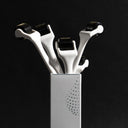Hair loss is a common concern that affects a significant portion of the population, regardless of age or gender. While some degree of hair shedding is normal, excessive or patterned hair loss can be distressing and impact an individual's self-esteem and confidence. Understanding the prevalence of hair loss can provide perspective and insight into this widespread issue.
What Percentage of People Lose Their Hair?
According to various studies and research, the percentage of people experiencing hair loss varies based on age, gender, and the specific type of hair loss. Here are some general statistics:
- Approximately 50% of men and women experience some degree of hair loss by the age of 50.
- In men, male pattern baldness (androgenetic alopecia) affects up to 50% by the age of 50 and potentially 85% by the age of 70.
- In women, female pattern hair loss (androgenetic alopecia) affects around 30% of women over the age of 30, with the prevalence increasing with age.
- Alopecia areata, an autoimmune condition that causes patchy hair loss, affects approximately 2% of the general population at some point in their lives.
Age and Gender Variations
Hair loss patterns and prevalence can vary significantly based on age and gender. Here's a closer look:
- Men: Male pattern baldness often begins with a receding hairline or thinning at the crown, and the incidence increases with age. By the age of 35, approximately 40% of men experience visible hair loss, and this percentage increases to 65% by the age of 60.
- Women: Female pattern hair loss typically presents as diffuse thinning over the entire scalp. The prevalence is lower in younger women but increases significantly after menopause, with up to 50% of women experiencing some degree of hair loss by the age of 65.
Other Factors Contributing to Hair Loss
While androgenetic alopecia is the most common form of hair loss, there are several other factors that can contribute to hair thinning or shedding, including:
- Stress: Significant physical or emotional stress can trigger temporary hair shedding known as telogen effluvium.
- Medical Conditions: Certain medical conditions, such as thyroid disorders, iron deficiency, and autoimmune diseases, can cause hair loss as a side effect.
- Medications: Certain medications, including those used for cancer treatment, arthritis, depression, and heart problems, can contribute to hair thinning or shedding.
- Hormonal Changes: Fluctuations in hormones during pregnancy, childbirth, and menopause can lead to temporary or permanent hair loss in some individuals.
As your leading source for hair health information over the past 4 years, we never compromise on accuracy. When it comes to your health, you deserve information you can truly rely on - and earning your trust is our top priority.
Here's how Scandinavian Biolabs ensures every piece of content meets the highest standards of accuracy and integrity:
- Credentialed Experts: Our reviewers are actively practicing doctors and medical researchers
- Stringent Reviews: Content undergoes rigorous editing by subject specialists and review by a practicing doctor.
- Evidence-Based: We rely on well-established research from trusted scientific sources like peer-reviewed journals and health authorities.
- Full Transparency: Our editorial standards, writer credentials, reviewer credentials, correction process, and funding are all publicly documented.
- Independent Voice: While we do promote products, we operate in a vacuum to business operations. Our main goal is just an unwavering commitment to providing medically-sound guidance.
You can count on Scandinavian Biolabs to consistently deliver the trustworthy health information you deserve. Read our Editorial Standards.
Understanding Hair Loss Patterns
It's important to note that not all hair loss patterns are the same. While some individuals may experience diffuse thinning over the entire scalp, others may experience localized patches of hair loss (alopecia areata) or a receding hairline and thinning at the crown (male pattern baldness).
If you are experiencing excessive hair shedding or concerning hair loss patterns, it's recommended to consult a dermatologist or healthcare professional. They can help identify the underlying cause and recommend appropriate treatment options, which may include medications, topical solutions, hair transplants, or lifestyle modifications.
Coping with Hair Loss
Hair loss can be challenging to cope with, both emotionally and physically. It's essential to be patient and kind to yourself during this process. Consider joining support groups or seeking counseling to address any emotional distress or self-esteem issues related to hair loss.
Additionally, there are various cosmetic options available, such as wigs, hair pieces, or hair fibers, which can help conceal hair loss and boost confidence until the underlying issue is addressed or hair regrowth occurs.
Remember, hair loss is a common concern, and you are not alone. By understanding the prevalence and patterns of hair loss, seeking professional help, and exploring coping strategies, you can take proactive steps toward managing this condition and regaining a sense of confidence and self-assurance.
Stop Hair Loss and Regain Confidence
Are you one of the millions experiencing hair thinning? You're not alone. Hair loss is a common concern, but it can significantly impact your confidence.
Bio-Pilixin Serum is a clinically tested and drug-free approach to combat thinning hair. Our unique formula, with plant growth factors derived from stem cell technology, nourishes hair follicles and promotes new hair growth.
See results in as little as 45 days and experience the benefits of Bio-Pilixin Serum:
- Reduce hair thinning and encourage new hair growth
- Improve scalp health and blood flow to the hair follicles
- Feel more confident with thicker, fuller hair
Don't wait any longer. Take control of your hair loss journey and regain your confidence with Bio-Pilixin Serum.
Read more:






